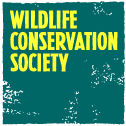Where to get some of the best pizza in San Francisco according to Serious Eats
The Eight Best Pizzas in San Francisco
1. Pizzaiolo’s Wild Nettle and Pecorino Pie
The window for this pie is limited, but the combination of grassy nettles with the salty Pecorino melded into the creamy, buttery, and almost nutty underlying mozzarella (some of the best around) has us thinking about this pizza all year long.
2. Pizzeria Delfina’s Magic Pie
This particular pie gets splashed out of the oven with a bit of cream—when it intermingles with the tomato and forms a thin layer of bright orange liquid at the center of the pie. Along with the fennely, lightly spicy sausage, the cream adds a richness to the sauce. Ribbons of Parmigiano, and a few leaves of basil round it all out.
3. Liguria Bakery’s Pizza Focaccia
From their oiled pans comes focaccia, redolent with olive oil and seasoned with salt. With an ethereally light body and crisp crumb, the “pizza” variety gets topped with a bright and sweet sauce and scattered with green onions that lend a sweet-tangy crunch.
4. Una Pizza Napoletana’s Filetti
In the Filetti, crust and cheese are dotted with cherry tomatoes that pop with sweetness—particularly this time of year, when just about nothing could be better than a summer tomato.
5. Pizzeria Picco’s Margherita
The sauce, made from Napoli tomatoes and sea salt, was fresh, fragrant, and simple. The creamy mozzarella is pulled fresh daily (the curds come from from Ferrante’s Dairy across the Bay). The cheese is evenly distributed across the pie, and along with the few basil leaves, seems to float above the fire-hued sauce.
6. Tony’s Pizza Napoletana’s Margherita with Sausage
Sausage, made with San Felice flour proofed in Neapolitan wood boxes, bright, pleasantly salty San Marzano tomatoes, fior di latte, fresh basil, sea salt, and extra virgin olive oil. The porky, spiced meat (reported to be from a Chicago-based purveyor) is at once a little bit sweet, a little bit spicy, but finishes with a sagey, almost floral note.
7. Flour + Water’s Bone Marrow Pizza
Our bone marrow and rapini pizza with fresh horseradish seemed an odd combination to say the least, but it worked; chin-dripping fattiness with sweet sweet, nutty, lightly charred brassica and a Parmesan-esque sprinkle of Microplaned fresh horseradish root to add a spicy kick—this pie assaults all of your senses at the same time.
The sausage is made in-house and applied in large, loose crumbles, and slivers of red noon are cooked just enough to bring out their sweetness.



